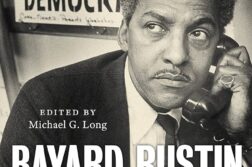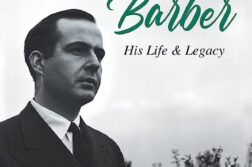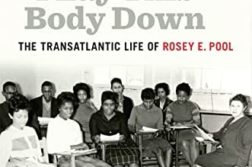IN 2010, Michael Kammen, the Pulitzer Prize-winning (People of Paradox) historian, an acquaintance from years earlier, asked me for some advice about gay history and culture. Michael taught at Cornell throughout his academic career, and at some point he learned that the university’s archival division had recently acquired a large manuscript collection—the Wormley/Crouse Papers (W/C).
“Wormley” was Edward Wormley (1907–1995), a modernist designer of furniture and interiors, who in the mid-20th century gained prominence for combining the avant-garde modernism of the Bauhaus and the International Style with certain features that derived from classical design. When Playboy chose the six most prominent designers of the day for a feature article on modern American furniture in 1961, it included Wormley (along with Harry Bertoia, Charles Eames, George Nelson, Jens Risom, and Eero Saarinen). Nationally prominent in mid-century, he also won a number of prestigious awards, including the Elsie de Wolfe Award from the American Institute of Decorators, the Distinguished Designer Award from the American Society of Furniture Designers, and an honorary Doctorate in Fine Arts from the Parsons School of Design in New York City.
The “Crouse” of the Cornell archive was Edward Crouse (1908–1975), Wormley’s lover of some fifty years. Born in 1908, Crouse was orphaned at ten and he and his two sisters had been lovingly brought up by an aunt and uncle. Even as a youngster Crouse adored the theater, regularly built sets and staged plays at home and hoped for a time to become an actor. As an adult, he became director of theatrical productions at the University of Georgia and, during World War II, at the Army base in Greenland. Though he’d gotten a master’s degree in journalism at the University of Wisconsin in 1936, that profession had never engaged him, and after the war he joined Wormley’s firm as an “associate” specializing in lighting.
Knowing that Kammen was heterosexually married and had two sons, I was delighted that a straight scholar, and one of distinction no less, had finally expressed interest in some aspects of gay life and culture. After our exchange in 2010, I didn’t hear from him again, put the matter aside, and simply assumed—accurately, as it would turn out—that he was working away steadily on the Wormley-Crouse project. Then in 2013 I received the news that Michael had died at age 77.
Earlier this year, I contacted his son Daniel and then, at his suggestion, his mother Carol Kammen (also a Cornell historian). She couldn’t have been more cordial and promptly sent me a copy of the nearly 200-page manuscript Michael had completed, as well as a thumb drive of a substantial portion of the Wormley/Crouse archive.
Carol and I agreed that Michael’s manuscript was too sketchy a work-in-progress to warrant publication, especially since his first-draft prose lacked the nuanced sophistication characteristic of his previous work. I myself had no wish to undertake a full-length study of the two Eds. Yet I thought that a condensed selection of their actual correspondence, along with commentary to help contextualize the material, would be a labor worth undertaking. Its real worth, it seems to me, lies in the detailed evidence it provides of the rather commonplace texture of two intertwined gay male lives during a fair portion of the last century, demonstrating that the period before Stonewall was not one of unbroken dread and repression for gay people.
Michael’s extensive originating labors, plus the usefulness of his manuscript in providing background details, makes it obvious that his name should be listed first as the true parent of this joint project. — Martin Duberman







